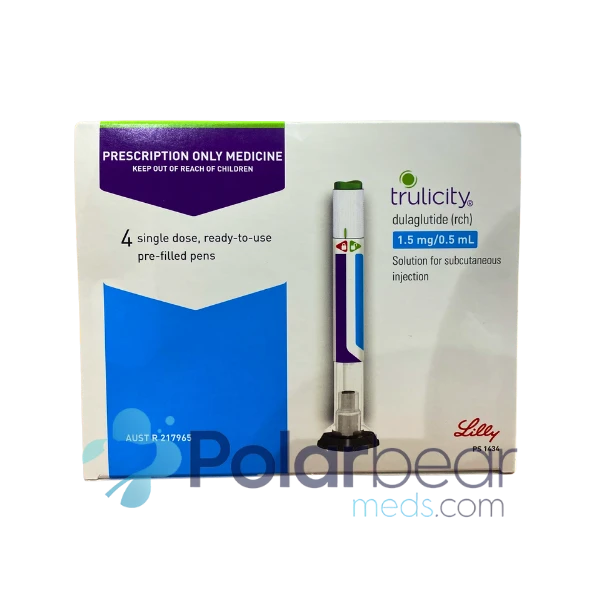
FDA Advisory: Caution Against Women’s Use of Domperidone for Lactation

Breast milk is the best kind of nutrition for infants’ growth and development. However, some women don’t produce enough milk to breastfeed their babies exclusively, leading them to seek solutions to enhance lactation. One such solution that has gained attention is the use of Domperidone, a medication primarily used for nausea and vomiting. The FDA warns women against using this unapproved drug as a galactagogue (to increase milk supply) because of its safety concerns. In this article, we will discuss what is the recent FDA warning against using Domperidone for lactation and what are the alternative methods for breastfeeding mothers. In addition, you can buy Domperidone online to treat your abdominal discomforts and other gastrointestinal issues.
Understanding Domperidone
Domperidone is commonly used to treat gastrointestinal disorders such as nausea, vomiting, and gastroparesis. It works by blocking the action of dopamine in the brain and increasing the motility of the stomach and intestines. Domperidone increases the level of prolactin, the hormone that is involved in breast milk production. Breastfeeding while taking Domperidone will help improve your breast milk supply. Most women use a Domperidone 10 mg tablet three times daily when their breast milk supply is low.
FDA Warning and Safety Concerns
Although not approved in the U.S. for human use, the FDA is aware some women have used Domperidone to promote lactation or boost breast milk production. The significance of Domperidone to increase milk supply has not been verified.
What Are the Risks Associated with Domperidone Use in Lactation?
Domperidone can prolong the QT interval, which is a dimension of the time between the beginning of the Q wave and the ending of the T wave in the cardiac electrical cycle. Prolongation of the QT interval may result in serious cardiac complications, including ventricular arrhythmias and sudden cardiac death.
- FDA has recognized cases of adverse cardiac events with domperidone use in breastfeeding women.
- In 2004 and then again in 2012, the FDA issued a warning about cardiac-related risks with the use of Domperidone to increase lactation.
Aside from cardiac risks, there are other potential adverse effects associated with the use of Domperidone. These include:
- Gastrointestinal disturbances (diarrhea, abdominal cramps, and constipation)
- Headache
- Fatigue and dizziness
- Hormonal imbalances (especially prolactin)
- Drug interactions (antifungal, antibiotics, or heart medicines)
Recent Warning
In 2023, the FDA concluded a reexamination of cases to assess neuropsychiatric adverse events linked with the discontinuation or attempted discontinuation (gradual dose-reduction) of Domperidone when used for milk production in breastfeeding mothers. Here are some recent findings by the FDA:
- FDA recognized six cases documenting different negative events, including anxiety, agitation, confusion, attempted suicide, insomnia, homicidal ideation, intrusive thoughts, obsessive thoughts and suicidal ideation.
- FDA’s findings provide adequate proof to indicate a potential link between the development of neuropsychiatric adverse events upon the sudden discontinuation of Domperidone when used for milk production.
Breastfeeding women may expose their babies to unknown risks if they take Domperidone while lactating. There may be serious side effects associated with the use of Domperidone for enhancing milk production or stimulating lactation, according to the FDA.
Domperidone Alternatives to Enhance Lactation
When it comes to increasing milk supply, several alternatives to Domperidone can be considered. Here are some herbal substances:
- Fenugreek: Fenugreek seeds or supplements are commonly used to boost milk production in lactating mothers. They contain compounds that may stimulate milk glands.
- Fennel: It is considered to be a galactagogue or a substance that improves breast milk. Its prominence for enhancing breast milk is related to its natural estrogen-like properties.
- Ginger: It is believed to help a mother heal from childbirth. It’s also considered to be a galactagogue that stimulates milk production.
- Garlic: Whenever you’re breastfeeding, you can consume garlic without any worries. Unless you and your baby are sensitive to garlic, you do not need to avoid it in your diet. Taking garlic in moderation can have a number of health benefits as well as increase the supply of breast milk in the body.
- Blessed Thistle: Blessed thistle is a herb often used alongside fenugreek. It’s believed to have galactagogue properties, promoting milk flow.
- Milk Thistle: Milk thistle is another herbal remedy that may support milk production. It’s rich in antioxidants and has been traditionally used for various health benefits.
- Oatmeal: Incorporating oatmeal into your diet may help increase milk supply. Oats contain iron, fiber, and other nutrients that can positively impact lactation.
There are, however, risks attached to these herbal medicines, such as side effects, interactions with other medications, and interactions with health conditions. Herbal medicines can benefit some women, but they shouldn’t be considered a substitute for evidence-based treatments. You should only use them after consulting a healthcare professional.
Some other alternatives ways are:
- Pumping and Nursing Frequency: The body produces more milk when the breasts are regularly empty through breastfeeding or pumping. Increasing the frequency of nursing sessions can enhance supply.
- Hydration and Nutrition: Staying well-hydrated and maintaining a balanced diet are essential for optimal milk production.
- Skin-to-skin Contact: When you hold your baby skin-to-skin, milk production is stimulated, and the mother and child can form a strong bond.
- Breastfeeding on Demand: Nursing frequently and responding to your baby’s hunger cues can help maintain milk supply and ensure adequate nourishment for your infant.
- Stress Management: An increased level of stress can interfere with milk let-down and milk production, so finding strategies to relax and de-stress is essential. Stress can be reduced, and a healthy breastfeeding relationship can be promoted by performing activities that enhance relaxation, such as meditation, deep breathing exercises, yoga, or taking a warm bath.
- Prescription Medications: Your healthcare providers may prescribe medications such as metoclopramide. It is a medication used to treat stomach issues such as reflux, nausea, and vomiting. It is the most commonly prescribed drug for lactation induction and improving a low supply of breast milk in the United States.
You should consult your healthcare professional before taking any medicine for lactation purposes. Let your doctor decide if the benefits of the particular medicine outweigh the side effects. Additionally, if your healthcare provider prescribed a Domperidone 10 mg tablet for your abdominal discomforts, you can buy Domperidone online at the best Canadian online pharmacy, Polar Bear Meds, at exclusive discounts.
Wrapping Up
The FDA warns against using Domperidone to increase breast milk production due to safety concerns, including potential cardiac and neuropsychiatric risks. Instead, breastfeeding mothers can explore alternative methods such as herbal remedies like fenugreek and fennel, maintaining hydration and nutrition, and promoting skin-to-skin contact and frequent nursing sessions. It’s important to consult with a healthcare professional before trying any alternative methods and to prioritize safety for both the mother and the baby. With proper support and guidance, breastfeeding mothers can find effective ways to enhance milk supply and nurture their babies’ growth and development.






















